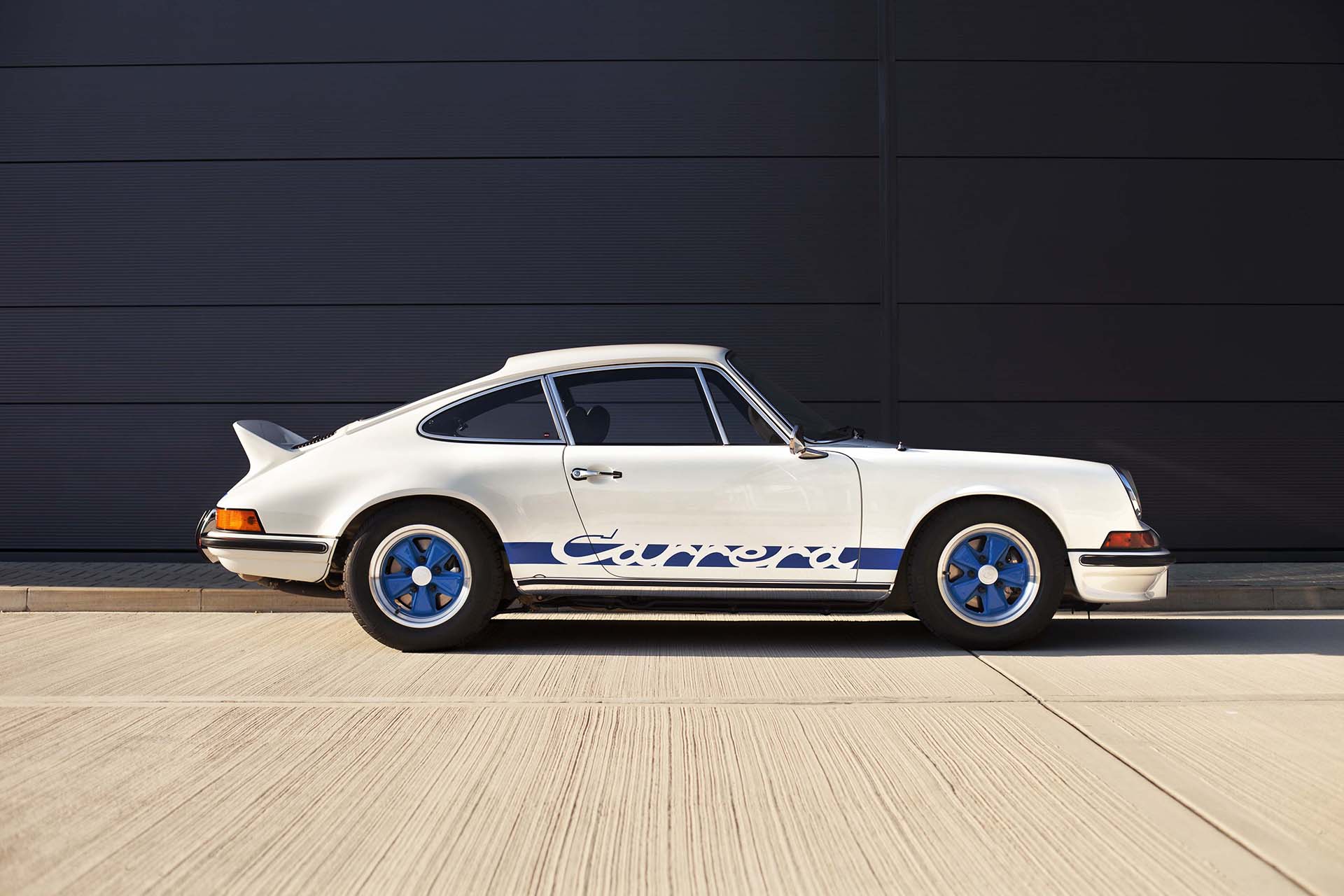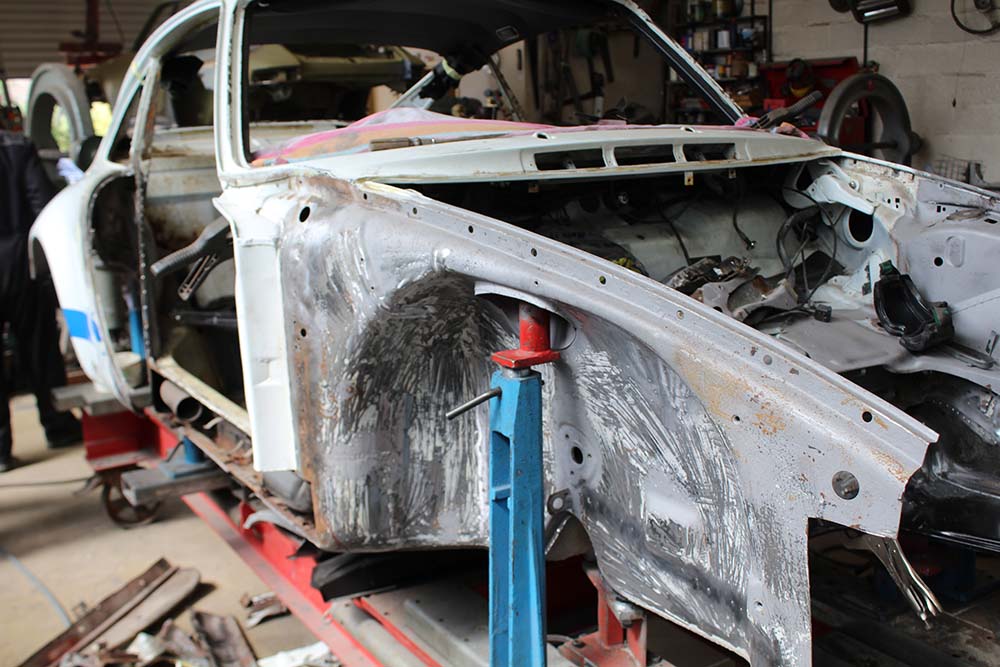Preserving History: Restoring a Classic 911 Carrera 2.7RS Touring
Attention all Porsche aficionados! The 1973 2.7 RS is undoubtedly the quintessential early 911, and it’s no wonder why. This magnificent vehicle was the first Porsche to ever sport the prestigious Rennsport emblem, as well as being the first 911 to bear the name “Carrera”. Its legacy is a thing of beauty, coveted by enthusiasts and collectors alike, and its influence on the world of high-performance cars is simply immeasurable. From its striking design to its unparalleled performance, the 1973 2.7 RS is a true masterpiece that continues to capture the hearts and minds of Porsche enthusiasts everywhere.
The legendary 2.7 RS tale begins with a heart-wrenching end of Porsche’s 917, which marked its territory with an impressive career of two Le Mans wins. However, fate had other plans, and the sports car racer was banned in 1972. Determined to continue the legacy and give a boost to sales, the engineering director, Ernst Fuhrmann, turned his attention towards the 911.
The 2.4-litre 911s, known for their quickness, formed the foundation of the RS. Its air-cooled flat-six underwent a transformation, with a bore-out to 2.68lcc, and low friction Nikasil cylinder linings that upped the power output from 193bhp to 213bhp at 6,300rpm. The torque also witnessed a significant hike, from 211Nm to 255Mn at 5,100rpm.
To shed weight, the car underwent a crash diet, with slender body panels, lighter bumpers, and no frills or fancies, reducing its weight to a mere 975kg in the original RS Sport spec models (factory code M471) – known as Lightweight or RSL.
Although many purists favored the “less is more” approach, a section of customers longed for some luxury. Thus, after the production of the initial 200 Lightweights and 17 RSH homologation cars, Porsche decided to build 1308 RS Tourings (factory code M472, RST): better equipped and weighing an additional 100kg.

| Model: | 911 Carrera 2.7 RS Touring |
| Year: | 1973 |
Engine |
| Capacity: | 2,687cc |
| Compression Ratio: | 8.5:1 |
| Maximum Power: | 213bhp @6,300rpm |
| Maximum Torque: | 255Nm 5,100rpm |
| Transmission: | Five-speed manual (915) |
| Chassis: | 911 360 1340 |
Part 1. Strip, Metalwork & Dry Build
Welcome to this exciting article that showcases the amazing restoration journey of a 2.7RS Porsche! This is a must-read for all Porsche enthusiasts who appreciate the level of detailed work that goes into restoring such an iconic car.
Get ready to immerse yourself in the stunning images of this Porsche as it undergoes metalwork and dry-build stages. Witness the passion and commitment of the owner and the team at Autofarm, who have embarked on a sympathetic restoration to preserve the essence of this beauty.
Our Autofarm philosophy, which values authenticity and attention to detail, is at the heart of this project. We believe that restoring a Porsche should be a labor of love, and this 2.7RS restoration is a testament to that belief.
Join us on this journey and see how the combination of dedication, experience, and love for Porsches can result in a masterpiece that will leave you in awe.
Strip & Metalwork
The car undergoes a painstaking disassembly process where each and every component is carefully evaluated for quality and condition. We create a comprehensive list of parts that need to be replaced with new ones while also identifying a complete inventory of parts that we can restore or source. At Autofarm, our philosophy is to preserve as much of the original Porsche as possible before sourcing more original replacements from that time period.
We are grateful that this stunning 2.7RS has retained much of its originality, allowing us to apply our preservation methodology and ethos throughout the entire restoration journey. Our team sets the vehicle down on our Cellete chassis jig to ensure that the main chassis and suspension pick-up points are correctly located on the vehicle. Every detail is meticulously taken care of as we work to restore this iconic Porsche to its former glory.

When the vehicle is removed from the jig, it is the start of an intricate and careful process of eliminating corrosion. Our team at Autofarm takes great pride in sourcing original parts to meet our exceptional standards of build. However, in cases where parts are unavailable, we use our expert knowledge of heritage metalworking practices used in the 60s-70s to fabricate bespoke parts ourselves.
Our aim is to preserve the vehicle in its original period, and we make every effort to achieve this. The metalwork process is meticulous, and the projects department conducts a thorough check on all key components to ensure perfect fitment. This crucial step is called a “dry build,” which allows us to make necessary adjustments before the vehicle enters the paint stage.
At Autofarm, we understand the emotional attachment our clients have with their vehicles. That is why we go above and beyond to provide the highest level of preservation and care. Our passion for vintage cars is unmatched, and we take pride in every step of the restoration process. Trust us to restore your cherished vehicle to its former glory and beyond.
Dry Build
Once a vehicle has undergone extensive metalwork, it is placed on the original chassis jig to ensure that all suspension pickup points are correctly aligned.
Whenever new metalwork is added to a car, we prefer to perform a preliminary dry build, which involves assembling the main panels to achieve the desired gapping and panel fit for the finished vehicle.
The dry assembly includes items such as door handles, light units, horn grilles, bumpers, doors, and window frames. Any key components that require fitting, such as fuel tanks and oil tanks, are also installed in the car to ensure that the critical pickup points, fixings, and panel gaps meet our high standards. If an issue arises, this is the opportune time to address it before painting.
The primary objective is to ensure that the final assembly of the car, after it has been stripped, undergone metalwork, and paint, is completed without any further drilling or modification to the body shell. All necessary adjustments and modifications should be made during the dry build stage.


Follow Us
Join










